Themed collection Synthesis 4.0: Towards an Internet of Chemistry

Introduction to Synthesis 4.0: towards an internet of chemistry
Guest Editors Richard Bourne, King Kuok (Mimi) Hii and Brandon Reizman introduce this themed collection on progress towards data-driven synthesis and an ‘internet of chemistry’.

React. Chem. Eng., 2019,4, 1504-1505
https://doi.org/10.1039/C9RE90048A
Assessing the impact of deviations in optimized multistep flow synthesis on the scale-up
This manuscript highlights the unavoidable connection between manual and self-optimized flow synthesis protocols for multistep flow synthesis and its scale-up.
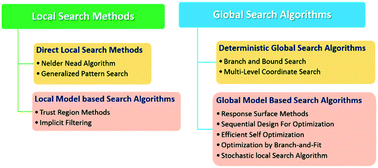
React. Chem. Eng., 2020,5, 838-848
https://doi.org/10.1039/D0RE00025F
The logic of translating chemical knowledge into machine-processable forms: a modern playground for physical-organic chemistry
With renewed interest and significant progress in computer-assisted synthetic planning, it is essential to codify the logic that should be followed when translating organic synthetic knowledge into reaction rules understandable to the machine.
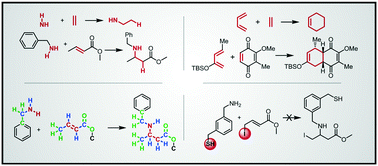
React. Chem. Eng., 2019,4, 1506-1521
https://doi.org/10.1039/C9RE00076C
Catalysis in medicinal chemistry
The advent of transition-metal catalysis (and likewise, bio-catalysis, photoredox-catalysis and organo-catalysis, etc.) promises to greatly increase access to diverse chemical matter in medicinal chemistry, but new catalytic reactions often fail to deliver product in applied synthesis.
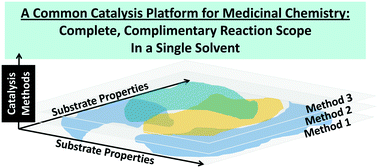
React. Chem. Eng., 2019,4, 1530-1535
https://doi.org/10.1039/C9RE00067D
Digital methods and tools for chemical equipment and plants
The Internet of Things (IoT), Industry 4.0, and the digitalization of business processes offer new opportunities and business models for the process industry, including education and training.
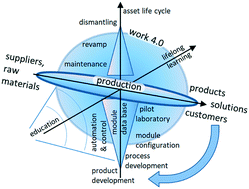
React. Chem. Eng., 2019,4, 1522-1529
https://doi.org/10.1039/C9RE00017H
Algorithms for the self-optimisation of chemical reactions
Self-optimising chemical systems have experienced a growing momentum in recent years. Herein, we review algorithms used for the self-optimisation of chemical reactions in an accessible way for the general chemist.
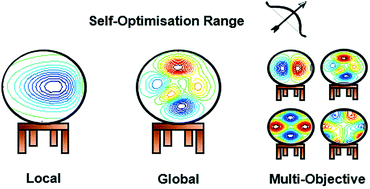
React. Chem. Eng., 2019,4, 1545-1554
https://doi.org/10.1039/C9RE00209J
Automated platforms for reaction self-optimization in flow
This article highlights recent progress in continuous flow self-optimizing platforms.
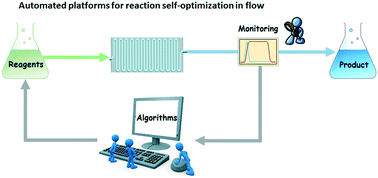
React. Chem. Eng., 2019,4, 1536-1544
https://doi.org/10.1039/C9RE00116F
Definitive screening designs for multistep kinetic models in flow
A definitive screening design (DSD) combined with reaction profiling was conducted using a flow reactor, in a short time frame, for the accurate estimation of kinetic parameters.

React. Chem. Eng., 2019,4, 1565-1570
https://doi.org/10.1039/C9RE00180H
Development of an automated kinetic profiling system with online HPLC for reaction optimization
Application of an automated profiling system with online HPLC uncovers an induction period in a cross-coupling and facilitates catalyst optimization.
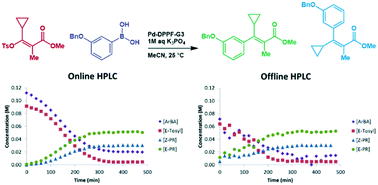
React. Chem. Eng., 2019,4, 1555-1558
https://doi.org/10.1039/C9RE00086K
Exploring the generation and use of acylketenes with continuous flow processes
The generation and use of acyl ketenes under continuous flow reaction conditions is reported. Several reaction classes of these reactive intermediates have been studied. Under zero headspace conditions, a ketone exchange process is possible between volatile ketones. The process can be readily scaled to deliver gram quantities of product.

React. Chem. Eng., 2019,4, 1559-1564
https://doi.org/10.1039/C9RE00072K
Continuous-flow crystallisation in 3D-printed compact devices
A flexible and cost-effective methodology to develop compact flow devices with heat exchange ability is presented here.
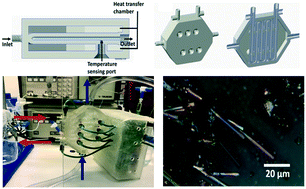
React. Chem. Eng., 2019,4, 1682-1688
https://doi.org/10.1039/C9RE00188C
Automated solubility and crystallization analysis of non-UV active compounds: integration of evaporative light scattering detection (ELSD) and robotic sampling
The integration of high-performance liquid chromatography-evaporative light scattering detection with robotic sampling allows for the acquisition of reliable and data-rich solubility and crystallization profiles of minimally- or non-UV active compounds in an automated manner.
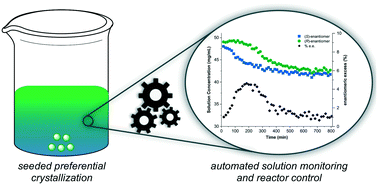
React. Chem. Eng., 2019,4, 1674-1681
https://doi.org/10.1039/C9RE00057G
Rapid route design of AZD7594
Multidisciplinary collaboration enables the rapid and efficient design and selection of an improved manufacturing route to a new potential medicine for the treatment of asthma.

React. Chem. Eng., 2019,4, 1658-1673
https://doi.org/10.1039/C9RE00118B
An improved liquid–liquid separator based on an optically monitored porous capillary
We report an automated device for the efficient microscale separation of immiscible liquids.
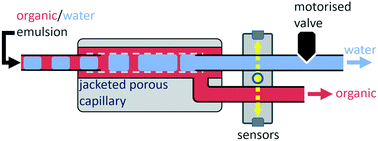
React. Chem. Eng., 2019,4, 1579-1588
https://doi.org/10.1039/C9RE00144A
Multidimensional dynamic experiments for data-rich process development of reactions in flow
The use of multidimensional dynamic flow experiments for reaction profiling and generation of an empirical surface response model for a Knoevenagel condensation reaction is described.
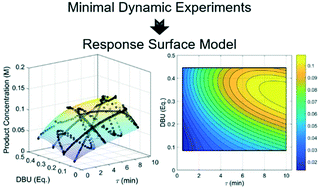
React. Chem. Eng., 2019,4, 1637-1645
https://doi.org/10.1039/C9RE00078J
An autonomous microreactor platform for the rapid identification of kinetic models
Rapid estimation of kinetic parameters with high precision is facilitated by automation combined with online Model-Based Design of Experiments.

React. Chem. Eng., 2019,4, 1623-1636
https://doi.org/10.1039/C8RE00345A
Uniting laboratory automation, DoE data, and modeling techniques to accelerate chemical process development
Rapid knowledge building of chemical processes with highly automated DoE (HAD) and statistical analyses and modeling.

React. Chem. Eng., 2019,4, 1646-1657
https://doi.org/10.1039/C9RE00079H
Rapid analytical characterization of high-throughput chemistry screens utilizing desorption electrospray ionization mass spectrometry
Application of high-speed DESI-MS analysis for the identification of optimal reaction conditions through high-throughput experimentation screening.
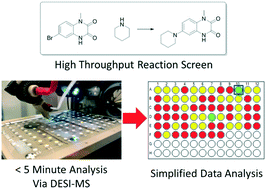
React. Chem. Eng., 2019,4, 1589-1594
https://doi.org/10.1039/C9RE00054B
Laboratory of the future: a modular flow platform with multiple integrated PAT tools for multistep reactions
The coupling of a modular microreactor platform, real-time inline analysis by IR and NMR, and online UPLC, leads to efficient optimization of a multistep organolithium transformation to a given product without the need for human intervention.
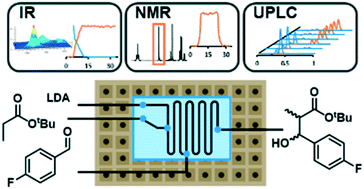
React. Chem. Eng., 2019,4, 1571-1578
https://doi.org/10.1039/C9RE00087A
Telechemistry: monitoring chemical reactions via the cloud using the Particle Photon Wi-Fi module
A popular electronic module and the associated Internet-of-Things tools provide chemists with more control over long-term experimental procedures and enhance lab work safety.
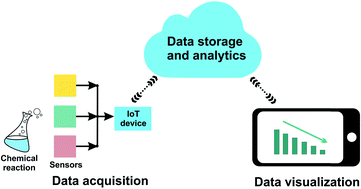
React. Chem. Eng., 2019,4, 1616-1622
https://doi.org/10.1039/C9RE00043G
An autonomous self-optimizing flow machine for the synthesis of pyridine–oxazoline (PyOX) ligands
A continuous flow synthesis of PyOX ligands has been developed using an autonomous self-optimizing flow reactor.
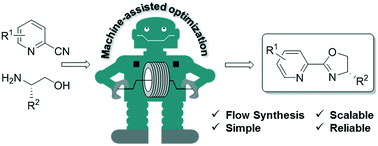
React. Chem. Eng., 2019,4, 1608-1615
https://doi.org/10.1039/C9RE00096H
Making better decisions during synthetic route design: leveraging prediction to achieve greenness-by-design
A conceptual framework for incorporating machine learned ligand prediction into predictive route comparisons, to enable greener chemistry outcomes.
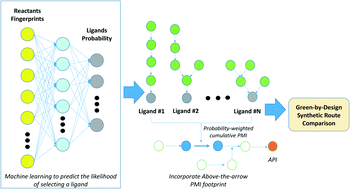
React. Chem. Eng., 2019,4, 1595-1607
https://doi.org/10.1039/C9RE00019D
About this collection
From RCE
Guest Editors: Professor King Kuok (Mimi) Hii (Imperial College London), Professor Richard A. Bourne (University of Leeds) and Dr Brandon Reizman (Eli Lilly and Company)
This collection of papers on ‘Synthesis 4.0’ is to demonstrate the growing importance of automation and cyber-physical systems on chemical synthesis. Like the Industry 4.0 trend, the use of smart technologies including automated reactor platforms, rapid prototyping, data visualisation, networked systems, online analytics, robotics and internet connected devices is becoming increasingly prevalent in chemical research laboratories.
The use of machines and technologies is transforming the way that chemists and chemical engineers work. It is enabling experimentation to be performed more efficiently and rapidly and promotes a multidisciplinary approach to synthesis. This collection is dedicated to the latest opinions and articles reporting the use of new technologies and methods to facilitate synthesis.